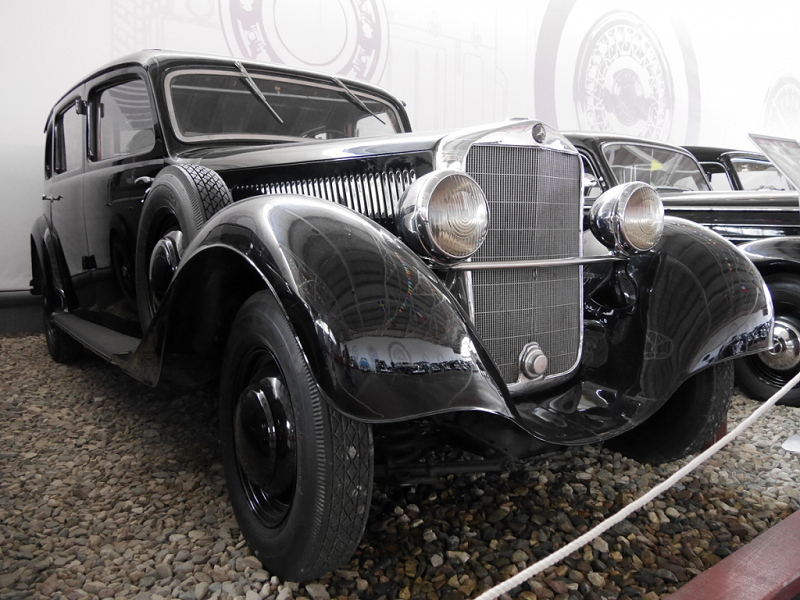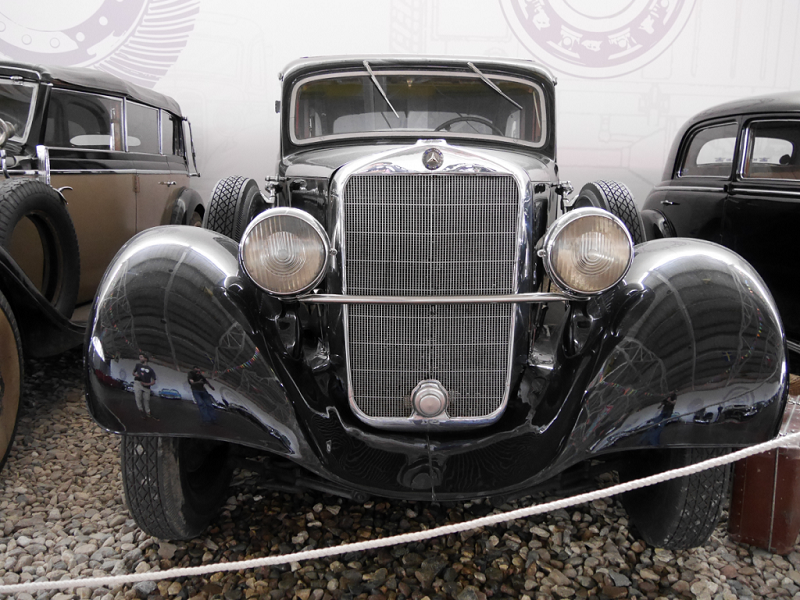Mercedes-Benz 260 D: made in 1940. Moscow transport museum
The Mercedes-Benz 260 D, coded Mercedes-Benz W 138 according to internal works designation, was one of the first three diesel engined series produced passenger cars, together with 1933 Citroën Rosalie 11UD and the diesel version of the Hanomag Rekord.
The 260 D was named in reference to its engine’s cubic capacity. Nearly 2,000 vehicles were assembled until 1940, after which the Daimler-Benz group had to devote itself almost entirely to military manufacture.
First attempts by Daimler-Benz to assemble a 6-cylinder diesel engine in a Mercedes-Benz Mannheim chassis ultimately failed due to its enormous vibration. 1935 saw the successful installation of the smaller OM 138, 2545 cc overhead valve, 4-cylinder engine in a Mercedes-Benz 230 (W21) chassis.
It employed the Bosch diesel fuel injection system and produced 45 bhp (34 kW) at 3000 rpm. The car weighed approximately 1,530 kg (3,373 lb) and could attain a top speed of 95 km/h (59 mph). Branded as the 260 D, the car was introduced to the public at the 1936 Berlin Motor Show, although 13 units were already produced in 1935. The car proved to be a good seller.












